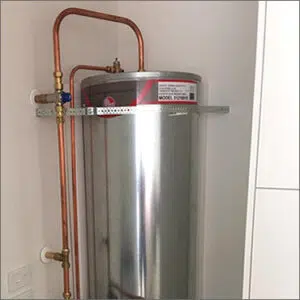Gas fires are becoming increasingly popular in New Zealand and it’s easy to see why. They provide an energy efficient way to heat your home that looks great. The latest technology in gas fire research and development means the latest models on the market are highly efficient and there is a model to suit every home, style and budget.
With that in mind, here is everything you need to know about gas fires.
Types of gas fires
There are several different types of gas fires suited to different homes and heating requirements.
Freestanding gas fires are easy to install and suit homes where you have limited space for your fire. The flue is exposed and installed through your roof.
Insert fires are a great solution if your home has an existing fireplace you’d like to replace. The new gas fire insert slides into the space and the new flue system will be added. This type of installation will keep your upfront costs lower, especially if you use the original surround.
Inbuilt gas fires are very ambitious. You build a surround around the fire, this encloses the fireplace and the flue. These are wide, sleek and frameless and suit any style home.
Gas fireplace flueing
The type of flue will determine where a gas fire can be installed.
Natural draft systems are often referred to as a standard flue system. This type of flue draws the air for combustion from the room and expels combusted gases to the outside via a vertical flue. There is a requirement for adequate ventilation in the room with this system as the air for combustion is drawn from the room, it needs to be replenished. This type of flue must terminate vertically though the roof.
Power flue systems have a sealed combustion chamber with a fan that draws air for combustion from the outside, through the outer flue and expels combusted gases to the outside through the inner flue. This system does not take oxygen or heated air from the room for combustion. The flues are smaller in size and can terminate vertically or horizontally. That means this type of gas fire can be installed in almost any living or working space, including bedrooms. These fires maintain the air quality for a healthy breathing environment.
Direct vent flue systems, like the power flue, also has a sealed combustion chamber, but uses natural draft to draw air from the outside and expel combustion gases to the outside. These units have a larger flue as it uses natural drafts to move air and gases. This system also maintains the air quality and can terminate vertically or horizontally.
Gas Fireplace Heat Output
The bigger the fireplace, the more heat gets produced. You want to find the right size gas fireplace to heat up your space, which means the right kWs for your space. As a guide, you will need roughly 1kW of heat per 10 square metres. This equation works well for a new home, but not so well for an old drafty villa with high ceilings. Layout is another factor that needs to be considered, if your dining room is next to your living room a great option would be a double-sided fireplace. Not only does this configuration look great, but it also splits the heat between the two spaces.
Gas Fire Efficiency
People think gas fires come with a high running cost, but this is one of the biggest misconceptions about gas fires. Contrary to popular belief, gas (especially natural gas) is one of the cheapest forms of energy available. You will need an energy efficient model to go with it.
Make sure you look out for the star rating of the gas fireplace, the more stars, the more energy efficient the appliance. Glass fronted gas fires are also more efficient because the unit is sealed and warm air from the room can’t escape back up the chimney. An efficient flue system such as the direct vent flue or the power flue will also make the unit a lot more efficient.
Choosing the right gas fire
The following factors all play a very important role in choosing the right gas fire for your home:
- Geographical location: Where you live in New Zealand determines the size of the warm zone your gas fire makes. In the colder areas that zone is a lot smaller than the warmer areas and the air temperature will be colder
- Room size will determine the size of your gas fire, as the heating area will need to cover the whole room
- Heat loss factors include: No ceiling or wall insulation; no carpets on the floors; no curtains; window area >15sqm; ceiling height >2.4m; and building on poles or piles.
- Functionality vs. aesthetics is something else that needs to be considered. The size and look of the gas fire and where it is likely to be installed
- Location of where the gas fire will be installed is important as each gas fire will have a clearance and suitability requirements to be considered.
Advantages
- No need to buy, chop or store firewood
- Energy savings
- No cleaning
- Easy to operate
- Warmer
- Stylish
- Excellent range of safety features
Disadvantages
- The cost of installing a gas fireplace may be higher than other heating options
- You will need a gas connection, if you do not use one already this may be added costs to an already expensive installation
If you’re interested in installing a gas fireplace or you’d like a bit more information, give us a call on 0800 758 623. We can discuss your options with you and offer a range of suitable options for installation get in touch with us today. We can also give you advice in which manufacturers and models are more efficient and suitable for your family home.

